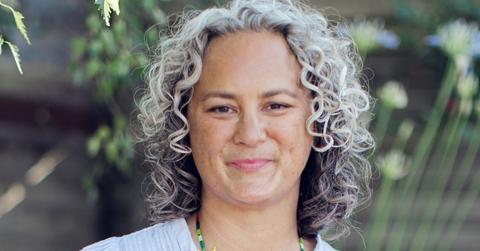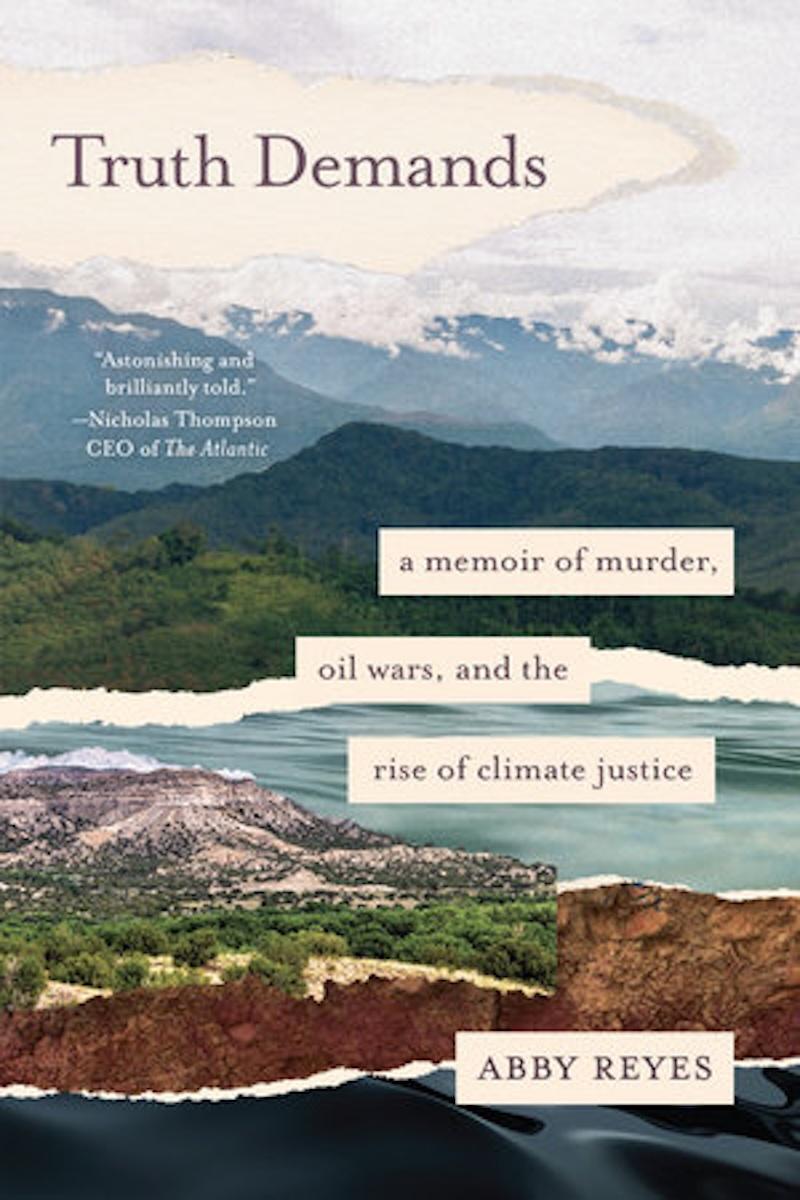Read an Excerpt From Abby Reyes' Book 'Truth Demands: A Memoir of Murder, Oil Wars, and the Rise of Climate Justice'
"When I was twenty-five, my life became beholden to a set of murders near Indigenous territory in Colombia."
Published May 6 2025, 9:00 a.m. ET

This is an excerpt from Truth Demands: A Memoir of Murder, Oil Wars, and the Rise of Climate Justice, by writer, activist, and climate justice advocate Abby Reyes, available May 6 from North Atlantic Books.
The excerpt shares a moment of profound grief and reckoning in Abby’s life following the murder of her partner, Terence Freitas, who was killed alongside two Indigenous rights leaders near U’wa territory in Colombia — land targeted by U.S. oil companies.
When I was twenty-five, my life became beholden to a set of murders near Indigenous territory in Colombia, land then coveted by a US-based oil company. My partner in work and life, Terence Unity Freitas, was slain, along with Ingrid Washinawatok and Lahe'ena'e Gay. I walked into adulthood through the gates of these murders.
There is a place in the forest in my imagination. There on the eastern edge of Colombia along the wooded route from Cubará to the broad meanders of the Arauca River. There is a place in the pocket of forest where, during the kidnappings, he placed his body down. Him there, taken; me, not there, captive only to his absence and the absence of knowing. Belly down on the fertile earth. Claiming a moment in the blind chaos to pause. When I saw him, I, too, was between the trees—in the back of the community garden next to our Brooklyn apartment, sheltered from view from the street, belly down on the fertile earth, ear turned to the ground, listening for his presence. Scanning the curve of the earth with my mind’s eye: Where are you?

In the days before he left New York for U’wa territory that last time, with the sounds of Union Street bustling outside our living room window, he surfaced an emerald cleaved into two pieces. It was a rough, cloudy emerald that a mine worker in rural Colombia had given to him. He pressed one piece into my palm and kept the other, burrowing it back into the interior of his belongings. When, after the US Department of State eventually delivered the pilfered detritus of his material estate to his mother’s house in Los Angeles, I drew out a silver bracelet I had given him along with other trinkets, but the emerald was nowhere to be found. I remembered back to that night in the woods during the kidnapping. In my imagination, belly down on the earth, he paused to press his half of the emerald back into the mud for safekeeping. He paused in transition, in reorientation, in surrender to what was to come. The ground was receptive, enveloping.
The pause, belly to the earth, was never just about the kidnapping. We pause, prostrate, to communicate internally, collectively, that we are done with the blind chaos, the frantic hustle. The guns may dictate the external parameters of our movements, but we supplicate not to them. We supplicate to listen from a deeper source. When we touch the earth, we pivot invisibly to reorient our breath to move in unison with the seeping silent flow of water, navigating underground in defiant and supple allegiance to future generations. We touch the earth to breathe life into our backbody, to move in unison with our blood, chosen, and spiritual ancestors, the teachers who have gone before and who show us the way in this life. We touch the earth to breathe life into the fullness of our wingspan, fingertip to fingertip, stretching out along the equator to encompass all our relations in community and solidarity. We touch the earth to breathe life along the stretch of the meridian of our earth body.
In this formation, there with our bellies on the earth, we call all our parts back home, we re-member the body, salvage it from the crush of the boot of extractive racial capitalist patriarchy. In this re-membering, we send what is precious underground, tuck it back into the earth for safekeeping. We rise realigned, our joints limber with tensile strength, knees slightly bent, weight in the balls of the feet, nape elongated, arms relaxed, palms facing up. With ancestors at our back, all our relations at our sides, we stand in the full length of our dignity, tethered from earth to sky, attentive and allegiant to future generations who stand in front of us. With or without the gun at our temple, we listen from a deeper place. We walk steadfast into that future. The way we walk is in balance, each step a sacred expression of our wanted obligation as keepers of the equilibrium between the world above and the world below. One step and then the next.
This is how we get where we are going: with each step in right relationship to the ancestors, the earth, our communities, and future generations. This action stands next to hope; it is faith. It is a kind of faith that strengthens with use. It is the faith that each step will rise and fall in time with the earth’s own respiration, mirroring the alchemic work of the trees as they turn the gems that we buried at their roots into seeds that the fertile soil of the river valley knows how to grow.